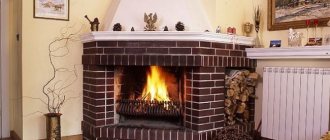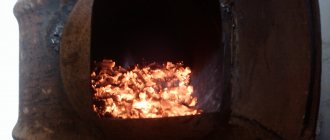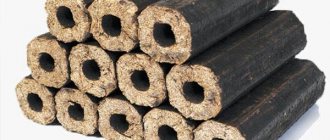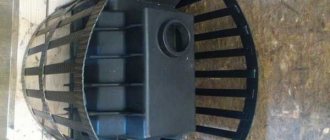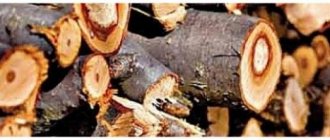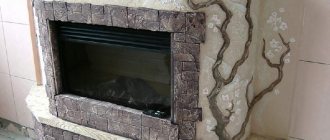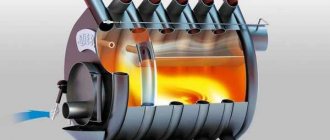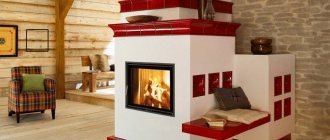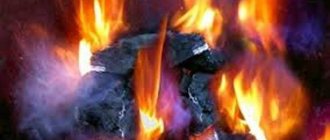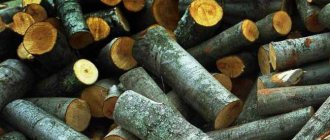Many potential buyers of solid fuel stoves do not see the differences between wood and coal modifications. The error leads to the fact that a good and reliable heat source does not operate at full capacity, or, on the contrary, fails prematurely due to regular excess of permissible temperature loads.
This article will discuss the selection, features of installation and operation of a metal coal stove for the home. This relatively new type of heating equipment is often used in regions of Russia where coal is considered the most profitable fuel.
Feasibility of installation
Some owners of gas boilers do not see the point in installing an additional source of heating at home - a coal stove. Others think it's mandatory. To understand which of them is right, you need to highlight the possible risks when operating heating systems (HC) without a backup energy source:
- accident on the gas main or in the local network;
- lack of heating power in extreme frosts;
- problems with the boiler itself.
The price of a modular protection system with automatic input of a backup heating source may not be affordable for the owner of a private house, while a coal stove is a completely affordable alternative.
There is generally no point in equipping a cottage or hunting lodge with a CO with a water circuit. Even if you visit there consistently once a week, but at the same time regularly heat your empty house all winter, the expenses will be completely unjustified. In small houses with a maximum of three heated rooms, a fireplace or stove will also be more appropriate than a boiler.
Many potential buyers are frightened by the lack of automation capabilities for heating devices of this type. If you do not agree to serve as a stoker around the clock, take a look at long-burning coal stoves for your home. These devices can work up to 8 hours on one load, and their efficiency is close to 90%.
Principle of operation
If we compare equal weight loads of coal and firewood, the former burns much longer and releases more energy. The operation of a coal furnace has a number of distinctive features:
- The vent is not closed completely.
Coal combustion requires a continuous flow of air through the grate. - Coal requires preheating.
To start the gasification process, the fuel must be dried and heated. A large amount of energy is spent on this. - The chimney has increased capacity.
Many furnaces with a multi-turn gas duct do not have a gate, and the intensity of the combustion process is regulated only by the supply of primary air.
Wood combustion occurs at lower temperatures. By the way, because of this difference, when burning coal there are no long, beautiful flames. The temperature distribution along the height of the firebox also differs. Excessive loading of a wood-burning stove almost always leads to the fact that the stove goes into overdrive - the process of uncontrolled combustion begins. The same thing can happen in a coal firebox, but it is more likely that a too thick layer of “fresh” fuel will cut off the air supply, the combustion energy will not be enough to heat it to the gasification temperature, and the stove will go out.
Coal heating boilers - operating principle
New models of long-burning coal boilers operate in accordance with the usual laws of physics, familiar to almost anyone who has graduated from high school.
Any flammable object burns faster if you set it on fire from below, but if combustion starts from the top of it, then the combustion process proceeds much more slowly, or even stops altogether. A good example would be a match: lit and with the sulfur head turned upward, it will burn quite slowly.
By turning it over with the burning end, from top to bottom, you will see how much more active the flame will become and how quickly the wood will burn. The burning rate can double. It is this feature that is used by coal heating boilers, the operation of which is based on the principle of long combustion.
In the system itself, work occurs as follows:
- Coal is loaded into a combustion chamber with a volume of up to five hundred liters. The amount of fuel supplied is determined by the modification of a particular model.
- Air is supplied in limited portions through the upper air duct. In this way, it is possible to reduce the combustion process to actually smoldering fuel.
- The coolant is heated through a water circuit that has a special device: the coil is not located in the upper part of the chamber, as in traditional systems, but goes around the combustion chamber along its entire perimeter. With the help of this design feature, it was possible to increase productivity and efficiency to 92-95%.
- Fine-tuning the sensitive automation allows for greater control over fuel combustion. The air is pumped in such a way that its flows penetrate all layers of coal loaded into the chamber, ensuring uniform combustion and reducing the remainder of unburnt material (read: “We connect a long-burning boiler with our own hands”). In this way, it is possible to increase the productivity of equipment by 50-75%, making heating with coal profitable.
Design Features
High thermal loads in the fuel combustion zone require the use of oxidation-resistant materials. The grate for a coal stove is made exclusively of gray cast iron. And to increase air throughput, the gaps between the rods are made larger than in wood-burning analogues.
The design life of most metal furnaces is 5-10 years. In order for the firebox to last this long on coal, the thickness of its walls must be increased. Many manufacturers (including us) use chromium-containing stainless steels in their construction, which have the following characteristics:
- heat resistance or resistance to destruction at high temperatures;
- low oxidizing capacity;
- low coefficient of thermal expansion;
- high melting point.
Special requirements are placed on the design of the combustion door. To prevent flue gases from entering the room, they must fit tightly to the walls and have a lock. The doors of coal-fired stoves are often cast from cast iron.
The furnace for burning coal has the shape of a truncated pyramid, with the base facing upward. The grate occupies its entire lower surface. This bunker-like design ensures good air flow and uniform subsidence of the fuel during combustion and reduction in volume.
Due to the relatively low temperature of the exhaust gases, to implement the function of long-term combustion of coal, it is necessary to supply heated secondary air. In furnaces with the possibility of double combustion, it first passes through channels located under the casing and then is fed into the firebox.
Types of charcoal kilns
Improvements in the technology for producing charcoal have led to the emergence of special furnaces. They have different capacities and can process industrial quantities of raw materials. There are the following types:
- Stationary. Designed for large volumes of wood, can operate on different types of fuel. Installed by large manufacturers. The disadvantage of this option is the need to comply with environmental safety standards.
- Mobile. These are compact devices of small size that are easy to move, install and easy to operate. They are used at logging sites and construction sites. They conveniently use wood waste as the main source of the final product.
Waste recycling brings great benefits, since residues are simultaneously disposed of and coal is mined without fuel costs.
Mobile charcoal kiln
Continuous equipment
A common type of charcoal kiln that provides a cyclical process is called continuous. In them, the gases formed as a result of pyrolysis are again directed into the wood, combined with vapors and gases still released, and exit the furnace. These measures are required for more uniform additional heating. The disadvantage of the method is the high final concentration of chemical compounds. To neutralize them, it is advisable to install additional equipment that will burn them. It should be located separately from the main ovens.
They work according to this scheme:
- vertical retorts. Calcination occurs from below, pyrolysis occurs in the middle, drying occurs from above,
- ovens with replaceable containers:
Retorts and chambers for charcoal burning are assembled from metal with mandatory thermal insulation.
Batch cycle units
The simplest option for a charcoal kiln is a regular 200 liter barrel. It ignites the stored raw materials; it does not involve the use of additional heat. Steam and gas are discharged through an opening in the container. The result is a low quality product with a yield of about 15%, contaminated, but practically costless.
Another type of charcoal kiln is one with heating of the walls of the chamber, which transfers heat to the filling. Typically this is a periodic cycle design. The following sequence of actions occurs in it:
- loading wood,
- over-charging,
- unloading,
- repeating the cycle from loading.
In such a device, part of the wood is constantly in the process of pyrolysis.
Portable batch charcoal kiln
Three chamber oven
A 3-chamber charcoal kiln allows you to use fuel economically and does not harm the environment. In it, the gas-vapor mixture is removed from the main chamber, cools and condenses. The resulting liquid and other non-condensable gases are used as an additional source of heat, added to the firebox.
Three-chamber furnaces are continuous - each compartment has its own stage. It is important that in the first chamber drying is achieved due to the heat from the combustion of pyrolysis gas mixtures. In addition to saving fuel, such stoves are useful:
- uniform use of working personnel, since loading and unloading occur at different times,
- duration of use. When installed in large enterprises and retrofitted with a gas generator boiler, the equipment is designed to use sawdust as a fuel source,
- the most affordable price compared to single-chamber options of the same volume, but greater efficiency due to the distribution of the load across different areas.
Factory Mobile Charcoal Kiln for Home Use
Single chamber oven
Single-chamber furnaces allow processing up to 8 tons of raw materials monthly. A full cycle requires 1 to 3 days of work. They are purchased both for individual use and for industrial production for the purpose of processing food industry waste and residues from wood processing plants.
The difference between industrial designs and smaller options for single-chamber furnaces lies only in the volume of processed raw materials and the ease of transporting equipment. In some countries, charcoal stoves are used at home - this coal is then used for cooking over fire.
Diagram of a simple portable charcoal kiln
Which coal to choose?
- By brand.
The most popular are long-flame (L) and long-flame gas (DG) coals. They have an optimal combination of specific heat of combustion and the proportion of volatile substances. For stoves with a long burning mode, the DG brand is best suited. You should not heat steel stoves with anthracite (A) and lean (T) coals. For complete combustion of such fuel, it is necessary to maintain a high temperature that can destroy the firebox. - By size.
The walnut fraction (about 40 mm in diameter) is considered the best option, since air passes through it well. Larger pieces are difficult to heat up to the gasification temperature, and small pieces clog the grate. - By ash content.
Non-combustible impurities contained in coal contain elements harmful to health. The smaller the “ballast”, the higher the quality of the fuel.
Furnace power
The power indicator is one of the universal criteria for choosing a heating stove.
But if you take only this into account, you can make a serious mistake when buying. The product data sheet indicates the maximum power calculated to operate on “ideal” fuel. Under actual operating conditions, these figures may be slightly lower due to high ash content or humidity. For stoves operating at different burning rates, the power is indicated for intensive mode. Heat transfer also depends on the design of the chimney. If it passes through the ceiling, more heat remains in the room than with a side exit.
For ease of selection, all models in the Teplodar catalog are accompanied by information about the maximum volume of the heated room.
Design and principle of operation
Firewood, in many regions of the country, has been steadily rising in price lately. Not everywhere there are conditions when the boundary of a personal plot abuts a forest, where the forester is a good friend and the chainsaw is not a wretched Chinese craft, but a branded Swedish or Canadian unit. In general, not everyone is lucky with firewood and, sometimes, the price tag for delivery of ready-made firewood makes you think about something sublime and unearthly. That’s when various thoughts about alternative fuels, for example, coal, come to mind.
Coal stoves for home heating from
Lokomotiv coal-fired home stoves, developed by our engineers, demonstrate the optimal combination of cost, functionality, durability and safety. You can buy two models of different capacities from us: for rooms with a volume of up to 120 m3 and up to 200 m3. Among the advantages of the equipment are:
- "Omnivorousness."
The stoves operate on wood, fuel briquettes and coal. To change the configuration of the internal space of the firebox, replaceable inserts are installed in it. - Possibility of heating food.
The oven is equipped with a hob. - Steel casing.
The stove is equipped with reliable protection from intense thermal radiation and is characterized by increased fire safety.
For advice on the installation and operation of Lokomotiv stoves, please contact the employees or the nearest authorized service center.
